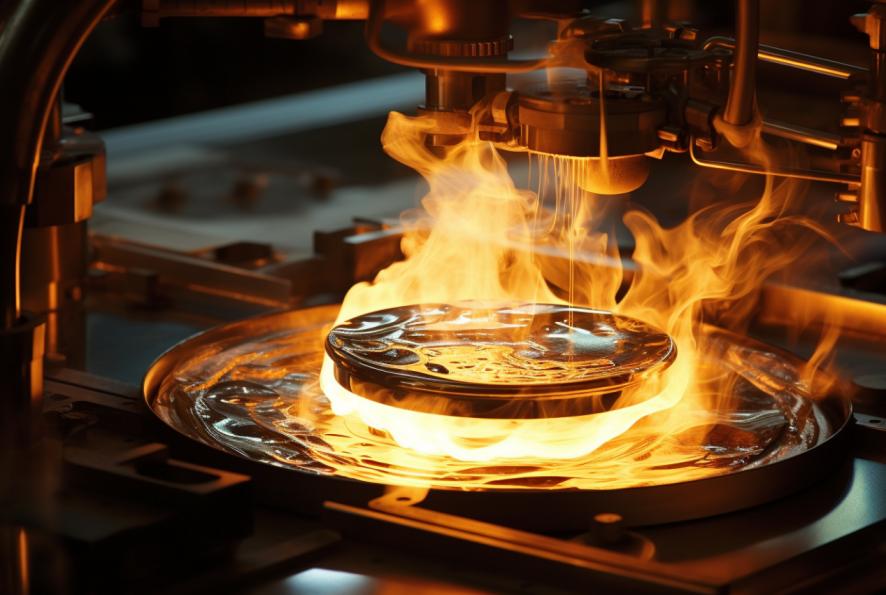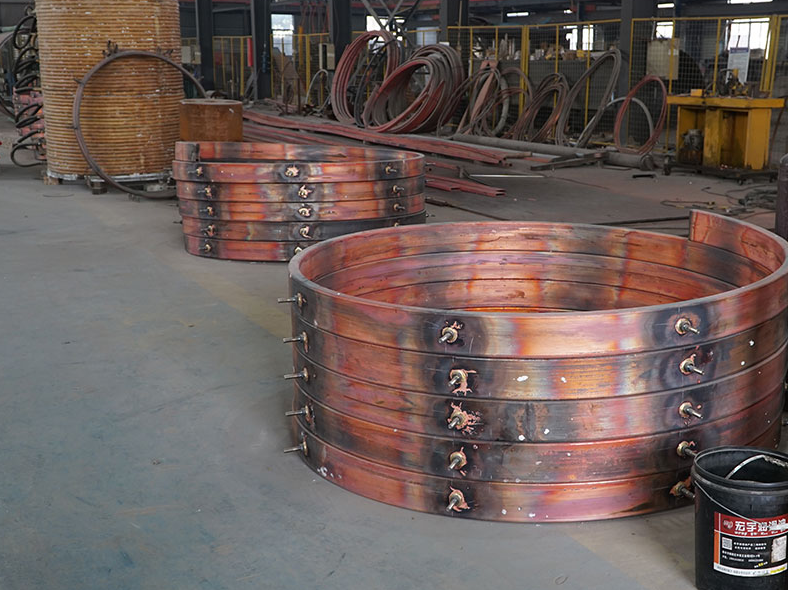What Are the Emerging Trends and Innovations in Vacuum Induction Melting Furnace Design?

Understanding the Mechanism
1.1 Principles of Operation
At the heart of a Vacuum Induction Melting Furnace furnace lies its inductor, which generates a high-frequency alternating magnetic field. When a conductive material is placed within this field, currents are induced, generating intense heat due to resistance. The controlled atmosphere within the vacuum chamber prevents reactions with atmospheric gases, ensuring the purity of the melted material.
1.2 Process Workflow
The process begins with the loading of raw materials into a crucible within the vacuum chamber. Once sealed, the chamber is evacuated to create the desired vacuum level. The inductor then applies the high-frequency alternating magnetic field, initiating melting. As the material melts, impurities and gases evaporate, leaving behind a pristine alloy.
1.3 Control and Monitoring
Vacuum Induction Melting Furnace furnaces boast sophisticated control systems that regulate parameters such as power input, temperature, and pressure. Real-time monitoring ensures precise control over the melting process, guaranteeing the desired composition and properties of the final alloy.
Advantages of Vacuum Induction Melting Furnace
2.1 Energy Efficiency
Compared to traditional melting methods, it furnaces offer superior energy efficiency. The absence of reactive gases reduces heat loss and minimizes energy consumption, making Vacuum Induction Melting Furnace a cost-effective solution for industrial-scale melting operations.
2.2 Cleanliness
One of the most significant advantages of it is its ability to produce exceptionally clean alloys. By operating in a vacuum environment, the furnace eliminates the risk of contamination from atmospheric gases, resulting in high-purity materials suitable for critical applications.
2.3 Precision and Control
Vacuum Induction Melting Furnace furnaces provide unparalleled precision and control over the melting process. From temperature regulation to alloy composition, operators can fine-tune parameters to meet the exact specifications of their application, ensuring consistent quality and performance.
Applications of Vacuum Induction Melting Furnace
3.1 Aerospace
In the aerospace industry, where reliability and performance are paramount, it plays a crucial role in the production of high-quality alloys for critical components. From turbine blades to structural elements, Vacuum Induction Melting Furnace-produced alloys offer exceptional strength, heat resistance, and fatigue properties.
3.2 Medical
Vacuum Induction Melting Furnace technology finds widespread use in the medical field, particularly in the production of implants and devices. Materials with biocompatibility and corrosion resistance are essential for medical applications, and Vacuum Induction Melting Furnace furnaces excel in producing such alloys with the purity and consistency required for biomedical implants.
3.3 Automotive
The automotive industry relies on Vacuum Induction Melting Furnace for the manufacture of high-performance engine parts, such as pistons, valves, and turbocharger components. By utilizing advanced alloys produced in Vacuum Induction Melting Furnace furnaces, automakers can achieve superior fuel efficiency, durability, and performance in their vehicles.
Safety Measures in Vacuum Induction Melting Furnace Operations
4.1 Importance of Safety Protocols
Safety is paramount in the operation of vacuum induction melting furnace, given the high temperatures and hazardous materials involved. Proper safety protocols must be established and followed diligently to prevent accidents and ensure the well-being of personnel. Taizhou Hongkang Electric Co., Ltd., a leading manufacturer of it furnaces, prioritizes safety in its design and operation guidelines.
4.2 Hazardous Materials Handling and Containment
Vacuum Induction Melting Furnace furnaces often deal with hazardous materials such as reactive metals and toxic fumes. Specialized handling procedures are required to minimize exposure risks and prevent environmental contamination. Sealed chambers and exhaust systems are utilized to contain and remove hazardous gases, while strict material handling protocols ensure the safe loading and unloading of materials.
4.3 Personal Protective Equipment (PPE) Requirements
Operators working with it furnaces must adhere to strict PPE requirements to mitigate risks associated with heat, radiation, and chemical exposure. This typically includes heat-resistant clothing, face shields, gloves, and respirators. Regular training and monitoring ensure that personnel are equipped with the necessary knowledge and gear to operate the furnace safely.
Maintenance and Troubleshooting Guide for Vacuum Induction Melting Furnace
5.1 Regular Maintenance Tasks
To ensure optimal performance and longevity, it furnaces require regular maintenance. This includes tasks such as inspecting and cleaning the crucible, checking and calibrating temperature sensors, and lubricating moving parts. Routine inspections help identify potential issues early on, preventing costly breakdowns and production delays.
5.2 Common Issues Encountered and Troubleshooting Steps
Despite meticulous maintenance, it furnaces may encounter common issues such as power fluctuations, crucible wear, or sensor malfunctions. Prompt troubleshooting is essential to minimize downtime and maintain productivity. Troubleshooting steps may involve diagnosing electrical circuits, replacing worn components, or recalibrating sensors to restore functionality.
5.3 Importance of Proactive Maintenance
Proactive maintenance is key to preventing unexpected failures and maximizing uptime. By adhering to a scheduled maintenance plan and conducting regular inspections, operators can address minor issues before they escalate into major problems. This proactive approach not only reduces repair costs but also enhances overall equipment reliability and performance.
Future Trends in Vacuum Induction Melting Furnace Technology
6.1 Emerging Technologies and Innovations
The future of Vacuum Induction Melting Furnace technology is marked by continuous innovation and technological advancements. Emerging technologies such as advanced cooling systems, predictive maintenance algorithms, and enhanced automation are poised to revolutionize Vacuum Induction Melting Furnace furnace design and operation. These innovations aim to improve efficiency, reliability, and safety in melting operations.
6.2 Integration of Automation and Robotics
Automation and robotics play a crucial role in the evolution of it furnaces, enabling greater precision, productivity, and safety. Automated loading and unloading systems, robotic manipulators, and real-time monitoring sensors streamline operations and reduce reliance on manual labor. This integration enhances efficiency while minimizing human error and exposure to hazardous conditions.
6.3 Potential Applications in Sustainable Manufacturing Practices
As sustainability becomes increasingly important in manufacturing, it technology offers opportunities for more environmentally friendly practices. By optimizing energy efficiency, reducing material waste, and minimizing emissions, it furnaces contribute to sustainable manufacturing processes. Furthermore, the use of recycled materials and innovative alloy formulations aligns with the principles of circular economy and resource conservation.
Conclusion
The it stands as a testament to the marriage of precision engineering and metallurgical expertise. From its origins in aerospace and metallurgy to its widespread adoption across various industries, it technology continues to drive innovation and advancement in materials science. As manufacturers like Taizhou Hongkang Electric Co., Ltd., push the boundaries of what is possible, the future of Vacuum Induction Melting Furnace holds promise for even greater achievements in metallurgy and beyond.

